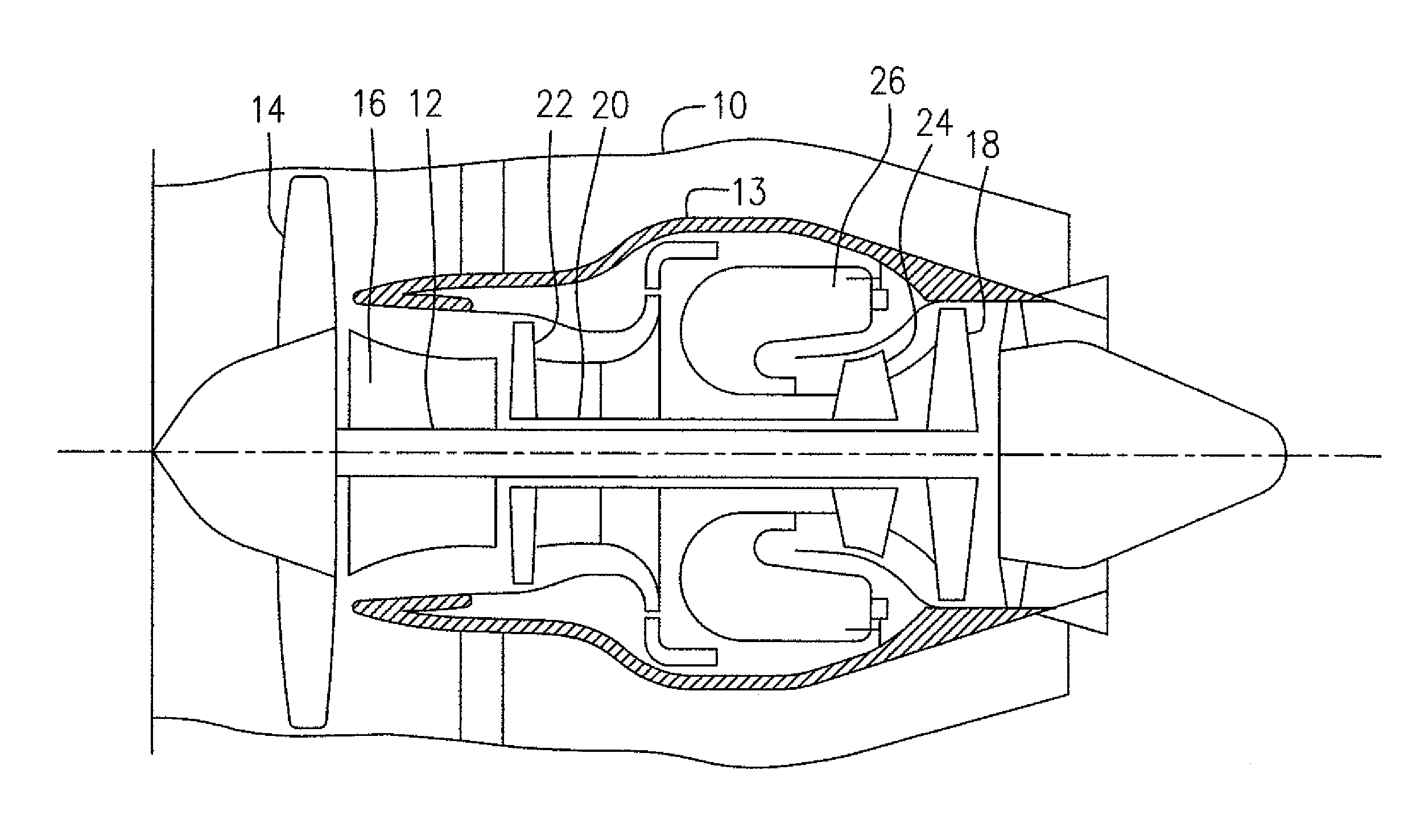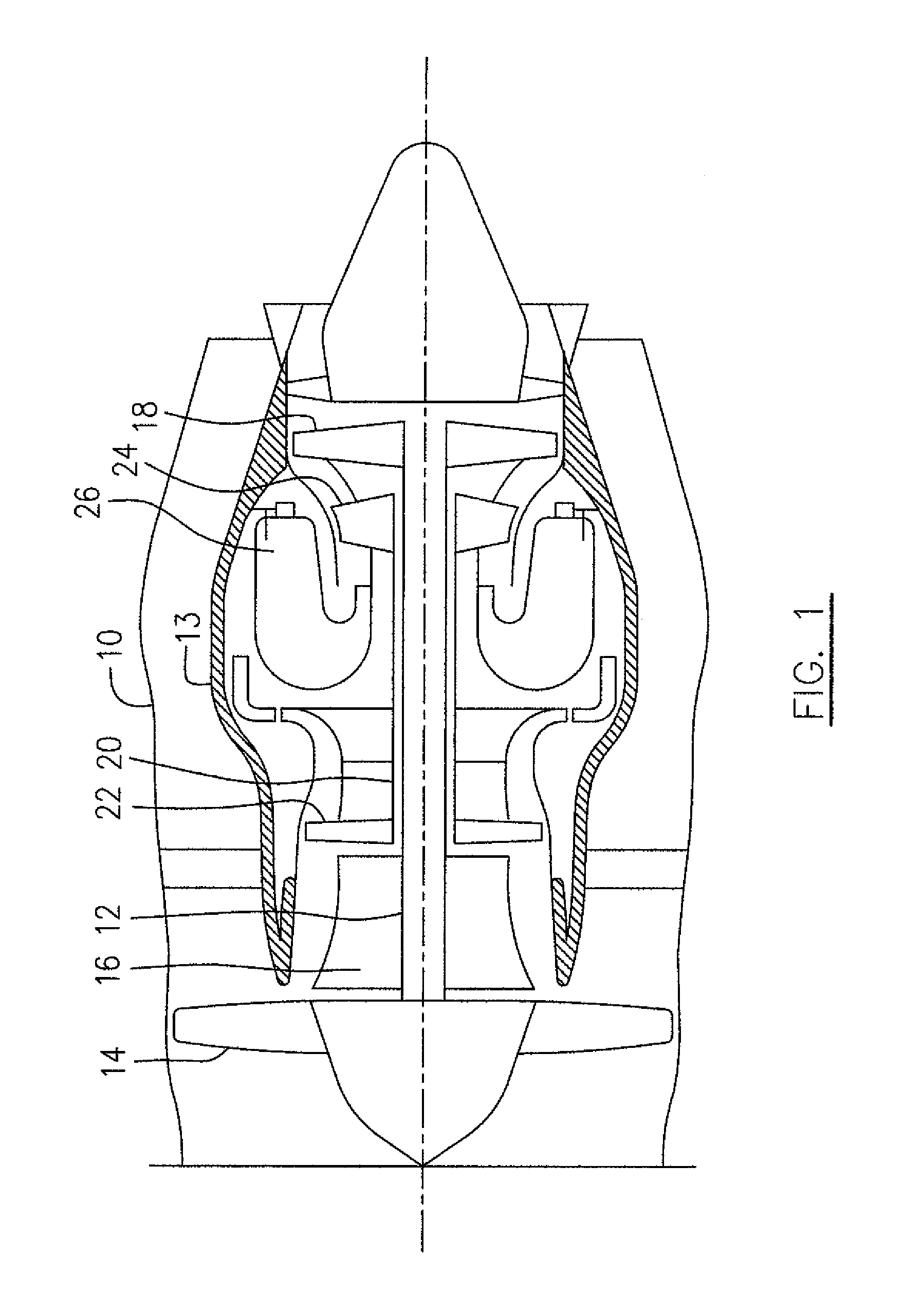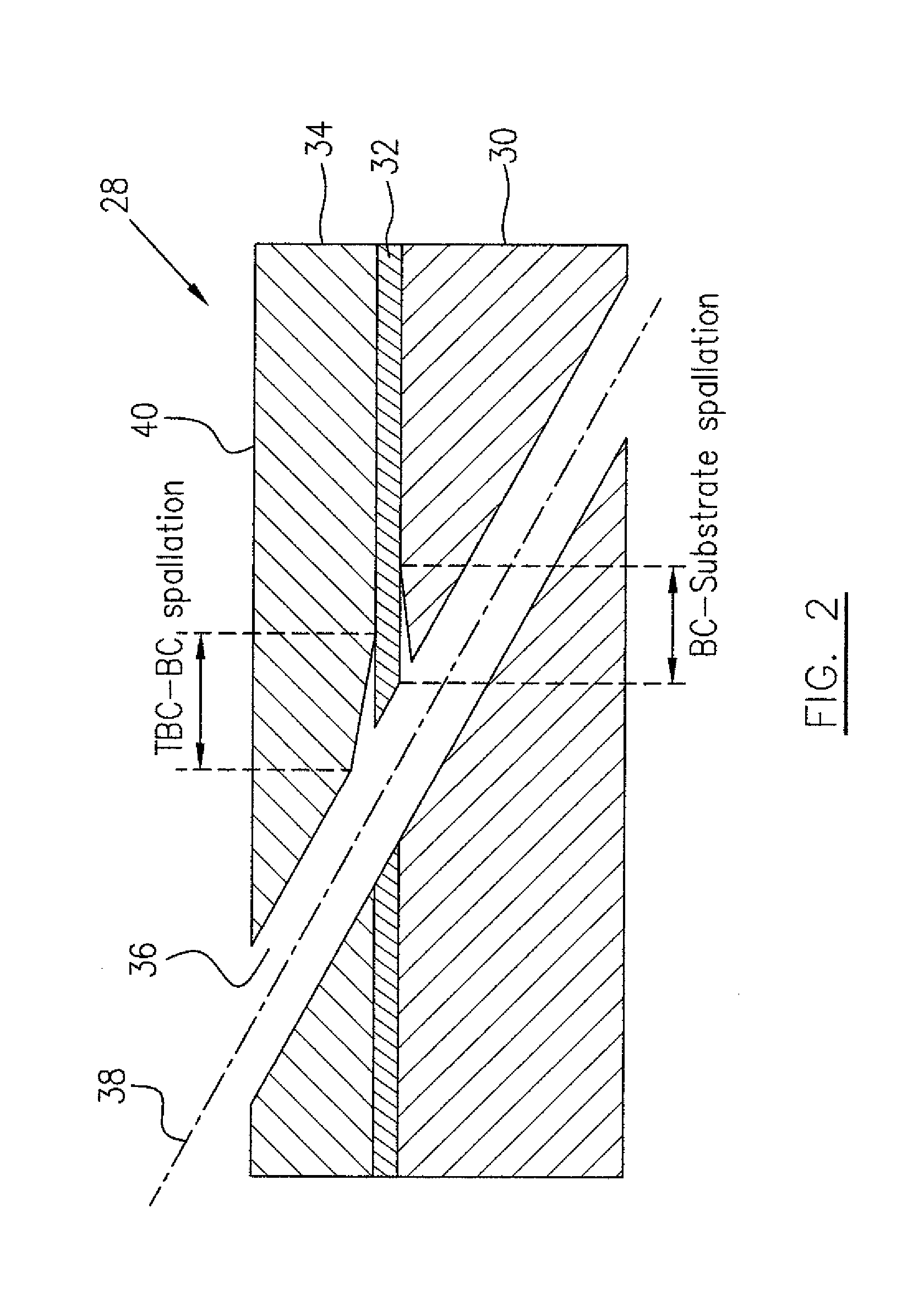Laser drilling methods of shallow-angled holes
a laser drilling and shallow angle technology, applied in the field of laser drilling, can solve the problems of excessive recast layer, consuming more than 60% of laser drilling energy, and unable to meet the needs of combustor components,
- Summary
- Abstract
- Description
- Claims
- Application Information
AI Technical Summary
Benefits of technology
Problems solved by technology
Method used
Image
Examples
Embodiment Construction
[0029]FIG. 1 illustrates a gas turbine engine as an example of the application of the described subject matter, which includes a housing or nacelle 10, a core casing 13, a low pressure spool assembly seen generally at 12 which includes a fan assembly 14, a low pressure compressor assembly 16 and a low pressure turbine assembly 18 and a high pressure spool assembly seen generally at 20 which includes a high pressure compressor assembly 22 and a high pressure turbine assembly 24. The core casing 13 surrounds the low and high pressure spool assemblies 12 an 20 in order to define a main fluid path (not numbered) therethrough including a combustor 26.
[0030]The combustor 26 includes various combustor components such as liners, heat shields, etc. One combustor component 28 is shown in FIG. 2 which includes a base metal 30, as a substrate, coated with a thermal barrier coating (TBC) 34 attached thereto. The thermal barrier coating 34 and the base metal 30 are secured together, for example b...
PUM
| Property | Measurement | Unit |
|---|---|---|
| angle | aaaaa | aaaaa |
| pressure | aaaaa | aaaaa |
| pulse frequency rate | aaaaa | aaaaa |
Abstract
Description
Claims
Application Information
 Login to View More
Login to View More - R&D
- Intellectual Property
- Life Sciences
- Materials
- Tech Scout
- Unparalleled Data Quality
- Higher Quality Content
- 60% Fewer Hallucinations
Browse by: Latest US Patents, China's latest patents, Technical Efficacy Thesaurus, Application Domain, Technology Topic, Popular Technical Reports.
© 2025 PatSnap. All rights reserved.Legal|Privacy policy|Modern Slavery Act Transparency Statement|Sitemap|About US| Contact US: help@patsnap.com



